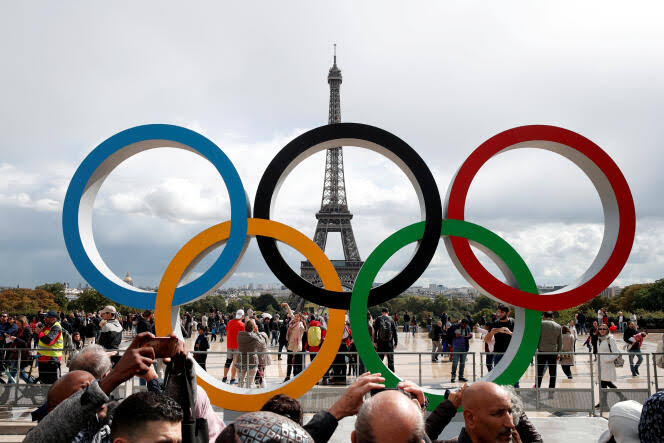Introduction
The Olympic Games are more than just a sporting event; they represent a significant opportunity for host cities to showcase their infrastructure, culture, and capabilities to a global audience. The development of tourism infrastructure in preparation for the Games plays a crucial role in ensuring a smooth and successful event. This blog explores how Olympic infrastructure is planned and executed, the long-term legacy it leaves for host cities, and the lessons learned for future events.
1. Planning and Development of Olympic Infrastructure
Initial Planning and Vision: The planning phase for Olympic infrastructure begins long before the Games. It involves creating a vision for how the city will accommodate athletes, spectators, and media while also considering the long-term benefits.
- Master Plans: Host cities develop comprehensive master plans that outline the construction and renovation of sports venues, transportation networks, accommodation facilities, and public spaces. These plans aim to create a cohesive and functional environment for the duration of the Games and beyond.
- Stakeholder Engagement: Engaging with stakeholders, including local communities, businesses, and government bodies, is essential for ensuring that the infrastructure meets diverse needs and gains broad support.
Construction and Renovation: The construction and renovation phase involves the actual building and upgrading of infrastructure.
- Sports Venues: Building or upgrading sports venues is a central aspect of Olympic infrastructure. These venues must meet international standards and provide facilities for both athletes and spectators.
- Transportation Networks: Enhancing transportation infrastructure, such as roads, public transit, and airports, is critical for ensuring smooth travel for attendees and reducing congestion.
- Accommodation: The construction of new hotels and the upgrading of existing ones are necessary to provide adequate lodging for the influx of visitors. This includes addressing accessibility and sustainability concerns.
2. Enhancing Visitor Experience
Accessibility and Inclusivity: Ensuring that infrastructure is accessible to all visitors, including those with disabilities, is a key consideration.
- Accessible Design: Incorporating features such as ramps, elevators, and accessible restrooms helps create an inclusive environment. Technology, such as mobile apps and digital signage, can further enhance accessibility.
- Customer Service: Training staff to assist visitors with various needs and providing clear information helps improve the overall experience.
Technology Integration: Technology enhances the visitor experience and streamlines operations during the Games.
- Smart Infrastructure: Implementing smart infrastructure solutions, such as digital ticketing, real-time transit updates, and interactive kiosks, helps manage large crowds and improve convenience.
- Connectivity: Ensuring robust internet connectivity and communication systems supports both visitors and event organizers, facilitating smooth operations and enhancing the experience.
3. Sustainability and Environmental Considerations
Sustainable Building Practices: Incorporating sustainable building practices into the construction of Olympic infrastructure helps reduce the environmental impact.
- Green Building Certifications: Achieving green building certifications, such as LEED (Leadership in Energy and Environmental Design), demonstrates a commitment to sustainability.
- Energy Efficiency: Utilizing energy-efficient technologies and renewable energy sources reduces the carbon footprint of the infrastructure.
Waste Management and Recycling: Implementing effective waste management and recycling programs is essential for minimizing environmental impact.
- Recycling Facilities: Providing recycling facilities at venues and public areas helps manage waste and promote recycling among visitors.
- Sustainable Transportation: Encouraging the use of public transportation, cycling, and walking reduces the environmental impact of travel.
4. Legacy and Long-Term Benefits
Economic Impact: The development of Olympic infrastructure has significant economic implications for host cities.
- Tourism Growth: Improved infrastructure attracts tourists beyond the Games, contributing to long-term economic growth. Enhanced venues and transportation systems make the city more appealing to visitors.
- Job Creation: The construction and operation of Olympic infrastructure create jobs and stimulate local businesses.
Community Development: Olympic infrastructure often leads to the development of new community amenities and public spaces.
- Urban Regeneration: Areas around Olympic venues may undergo urban regeneration, improving local neighborhoods and providing new recreational spaces.
- Cultural and Social Benefits: The Games can promote cultural exchange and community pride, fostering a sense of unity and belonging.
5. Lessons Learned and Future Considerations
Planning and Coordination: Effective planning and coordination among stakeholders are crucial for the successful development of Olympic infrastructure.
- Flexibility and Adaptability: Being flexible and adaptable in response to unforeseen challenges helps ensure that projects stay on track and meet objectives.
- Stakeholder Communication: Maintaining clear communication with stakeholders throughout the process helps address concerns and gain support.
Post-Games Utilization: Maximizing the use of Olympic infrastructure after the Games is essential for ensuring long-term benefits.
- Conversion and Repurposing: Planning for the conversion or repurposing of sports venues and other facilities can prevent them from becoming underutilized. For example, converting sports venues into community centers or event spaces can provide ongoing value.
- Maintenance and Upgrades: Regular maintenance and upgrades ensure that infrastructure remains in good condition and continues to meet the needs of the community.
6. Case Studies of Olympic Infrastructure
London 2012 Olympics: The London 2012 Olympics focused on urban regeneration and sustainability. The Olympic Park underwent significant redevelopment, leading to the creation of new housing, parks, and community facilities.
Beijing 2008 Olympics: The Beijing 2008 Olympics involved extensive infrastructure development, including the construction of iconic venues such as the Bird’s Nest stadium. The Games left a legacy of improved transportation and urban development.
Tokyo 2020 Olympics: The Tokyo 2020 Olympics faced challenges related to the COVID-19 pandemic, but it still made strides in sustainability and technological integration. The development of the Athletes’ Village and other infrastructure aimed to provide long-term benefits for the city.
7. Conclusion
The development of tourism infrastructure for the Olympic Games involves careful planning, construction, and management to ensure a successful event and long-term benefits for host cities. By focusing on accessibility, sustainability, and legacy, host cities can create an environment that not only supports the Games but also contributes to lasting economic, social, and cultural growth. The lessons learned from past Olympics provide valuable insights for future events, helping to build a legacy that benefits both the immediate and extended communities.

